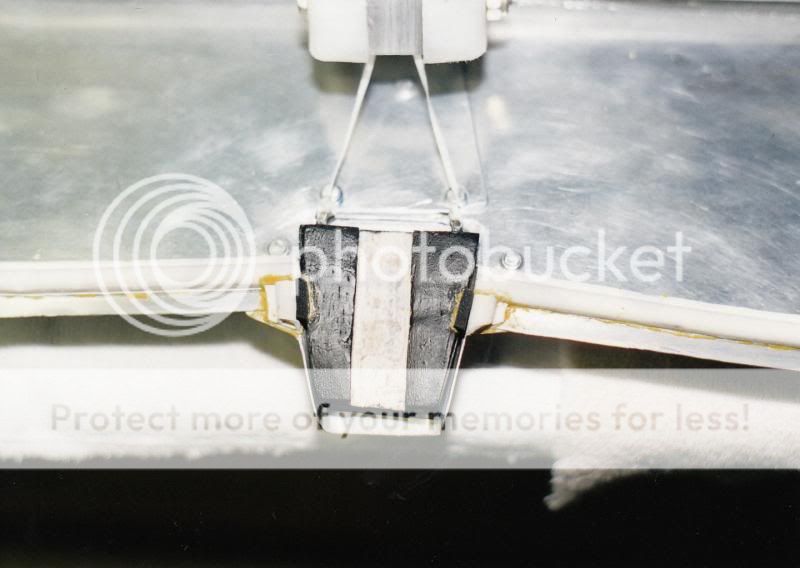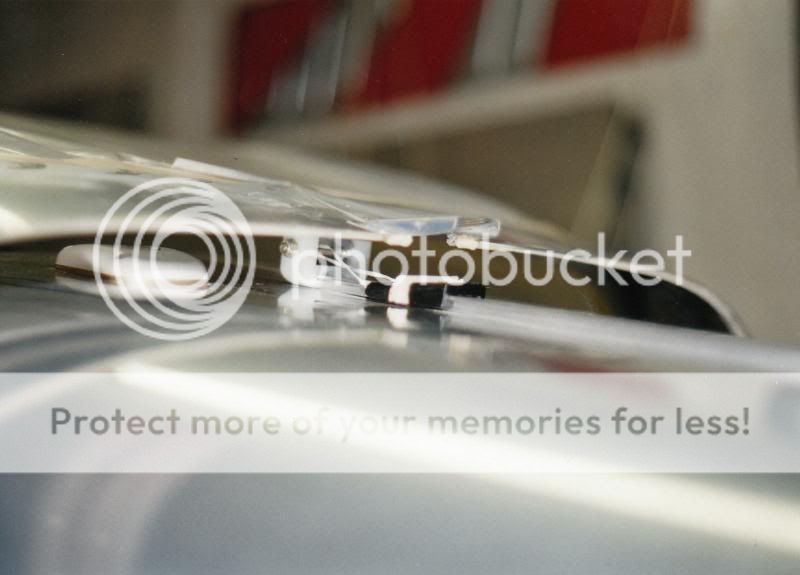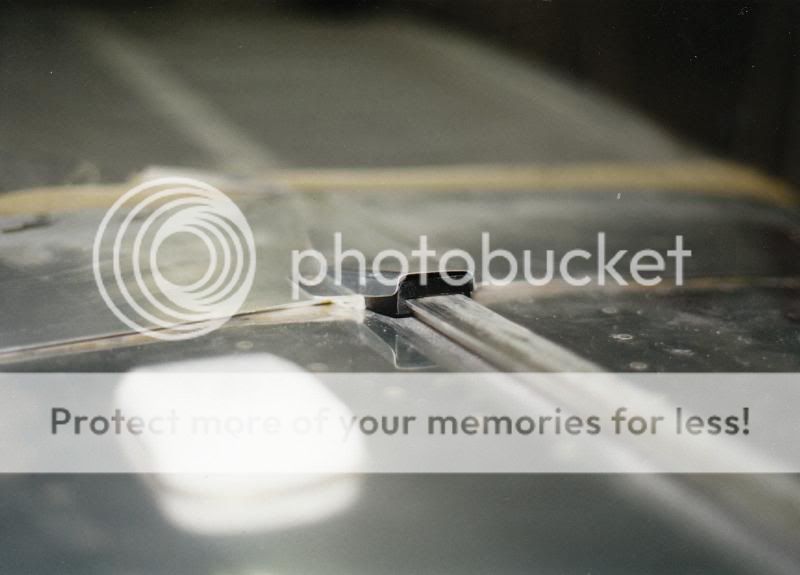Van's Air Force
You are using an out of date browser. It may not display this or other websites correctly.
You should upgrade or use an alternative browser.
You should upgrade or use an alternative browser.
Flying in the rain
- Thread starter jgoehl
- Start date
tc1234c
Well Known Member
I flew through rain many times. Only thing annoying is the rain coming from the back of the sliding canopy (around the track). Since the back of the canopy has higher pressure rainwater will get pushed in. I carry a plastic sheet to cover my luggage.
When rain is strong enough (or fly fast) paint on my aluminum propeller may chip. It happens to the wing leading edge paint too.
On the flat ground, when there are only yellow and green on the radar often the air is smooth. When the rain is like an opaque curtain don't try to go through it!
When rain is strong enough (or fly fast) paint on my aluminum propeller may chip. It happens to the wing leading edge paint too.
On the flat ground, when there are only yellow and green on the radar often the air is smooth. When the rain is like an opaque curtain don't try to go through it!
Toobuilder
Well Known Member
I bought a flying 7A,
With the design of the 7a , What keeps the rain from going into the air intake , through the filter and being ingested into the engine when flying through rain?
Can we guess that you are fuel injected, with the intake in the left side cowl opening? If so, then the primary caution is when parked outside. Water can get in the snorkel and funnel right down to to the servo opening and (depending on drain holes/sniffle valves) load a bunch of water in the intake. On engine start, the the first cylinder may pull a big slug of water in and hydraulic lock the engine.
Neal@F14
Well Known Member
Can we guess that you are fuel injected, with the intake in the left side cowl opening? If so, then the primary caution is when parked outside. Water can get in the snorkel and funnel right down to to the servo opening and (depending on drain holes/sniffle valves) load a bunch of water in the intake. On engine start, the the first cylinder may pull a big slug of water in and hydraulic lock the engine.
A small hole drilled in the bottom center of the snorkel just before it joins the servo inlet will let water drain out.
Toobuilder
Well Known Member
A small hole drilled in the bottom center of the snorkel just before it joins the servo inlet will let water drain out.
Agreed - which is why I mentioned the use of sniffle valves and drain holes. It may be completely obvious to some of us, but I'll bet there are plenty of airplanes built without any drain provisions at all.
Last edited:
Fly'n in rain
X-c flying gets me in the rain once and a while, I live in Oregon and which makes for rain being a constant Wx season.
Has been a non-event as long as I don't go into the heavy stuff (turbulence). Don't care to get tossed around a bunch so I stay out of Red, Green and even most Yellow on the XM WX map. Call me a whimp but don't need my belly full of jelly getting bounced about. Haha.
Paint on the prop gets warn, as does the paint on the engine cylinder heads. Might consider Blade Tape if it bugs you that much.
I too pull the carb heat. That "visible moisture" thing. Don't want Carb Ice.
Back when I was taught, the old guys told me to be mindful of low power settings (carb partly open), Carb Ice. So now I just close her up to avoid that possibility. In these RVs it's not like a little engine performance drop is going to be much notice- while passing through a thin cell or light showers.
Like others said, it's really a pilot comfort issue and staying DRY.
X-c flying gets me in the rain once and a while, I live in Oregon and which makes for rain being a constant Wx season.
Has been a non-event as long as I don't go into the heavy stuff (turbulence). Don't care to get tossed around a bunch so I stay out of Red, Green and even most Yellow on the XM WX map. Call me a whimp but don't need my belly full of jelly getting bounced about. Haha.
Paint on the prop gets warn, as does the paint on the engine cylinder heads. Might consider Blade Tape if it bugs you that much.
I too pull the carb heat. That "visible moisture" thing. Don't want Carb Ice.
Back when I was taught, the old guys told me to be mindful of low power settings (carb partly open), Carb Ice. So now I just close her up to avoid that possibility. In these RVs it's not like a little engine performance drop is going to be much notice- while passing through a thin cell or light showers.
Like others said, it's really a pilot comfort issue and staying DRY.
rzbill
Well Known Member
the biggest issue is the weather sealing of he cabin
You HAD to bring that up, didn't you..
apkp777
Well Known Member
I have flown through rain on several occasions. Some very heavy, even though I try to avoid it. On one occasion the engine started to "bog-down". Definitely got my attention. I too pull the carb heat and that's my "pre-rain" check.
My problem, is I get water coming from under my panel. That's not very comforting! I have a tip-up and just can't find the leak source. My Catto prop with the nickel leading edge seems to handle the rain pretty well.
My problem, is I get water coming from under my panel. That's not very comforting! I have a tip-up and just can't find the leak source. My Catto prop with the nickel leading edge seems to handle the rain pretty well.
Other than pulling Carb heat, nothing keeps the rain out. that's why you should have a small hole in the bottom of the air box. What water does make it into the engine just make more horsepower - it's called water injection! just be sure it's above freezing as the filter could become clogged other wise....
I bought a flying 7A,
With the design of the 7a , What keeps the rain from going into the air intake , through the filter and being ingested into the engine when flying through rain?
What water does make it into the engine just make more horsepower - it's called water injection! ...
Not exactly. Water injection can suppress detonation, so with water you can run extra high MP, high compression pistons, etc., which do increase power. But water injection into an engine which runs fine without it slightly decreases power, as it displaces oxygen.
Captain_John
Well Known Member
A small hole drilled in the bottom center of the snorkel just before it joins the servo inlet will let water drain out.
I know that most do this, but I have been holding off on doing it for lack of details.
I can not find mention of it in the plans.
I am thinking that, like most things in building this thing is... There is nothing to it but to do it.
Is this hole as simple as that?
Perhaps a number thirty hole at a bit of an angle so that it is vertical on a taildragger?
Anyone???
David-aviator
Well Known Member
I bought a flying 7A,
With the design of the 7a , What keeps the rain from going into the air intake , through the filter and being ingested into the engine when flying through rain?
Nothing except carb heat or filter by pass which sucks air from the engine compartment.
But be aware, heavy rain can be very heavy, like flying under water. A modern jet engine doesn't seem to mind it (early jets did flame out in rain) but the little piston engine might be overwhelmed by it. A gross amount of water entering the engine compartment could shock cool the engine and disrupt the ignition system.
Best plan is not to flight test an RV in heavy rain.
A fix for the cold/air/rain hole in the back



The black part is balsa wood sheet s selected and glued together to fit the rail. The outer surface is cut and sanded to shape to fit my aluminum cover fairing. The white is "P" strip bought from Aircraft Spruce that is glued into a recess carved into the balsa wood plug with 3M weatherstrip adhesive. The pull string is nylon wire bundle lacing tape (string) bought from Aircraft Spruce. The pull connections on the plug are .020 safety wire passed through the plug bent over in a "U" shape and pulled back into the plug to prevent pullout and an attachment loop is formed on the other end. These photos were taken in March of 2003, 1 year before the first flight of out RV-6A. Today is September 9, 2013 and the plane has well over 1000 hours on it and it works perfectly. One change I made is to put plastic tubing (wire sleeving) on the pull strings.
Bob Axsom



The black part is balsa wood sheet s selected and glued together to fit the rail. The outer surface is cut and sanded to shape to fit my aluminum cover fairing. The white is "P" strip bought from Aircraft Spruce that is glued into a recess carved into the balsa wood plug with 3M weatherstrip adhesive. The pull string is nylon wire bundle lacing tape (string) bought from Aircraft Spruce. The pull connections on the plug are .020 safety wire passed through the plug bent over in a "U" shape and pulled back into the plug to prevent pullout and an attachment loop is formed on the other end. These photos were taken in March of 2003, 1 year before the first flight of out RV-6A. Today is September 9, 2013 and the plane has well over 1000 hours on it and it works perfectly. One change I made is to put plastic tubing (wire sleeving) on the pull strings.
Bob Axsom




